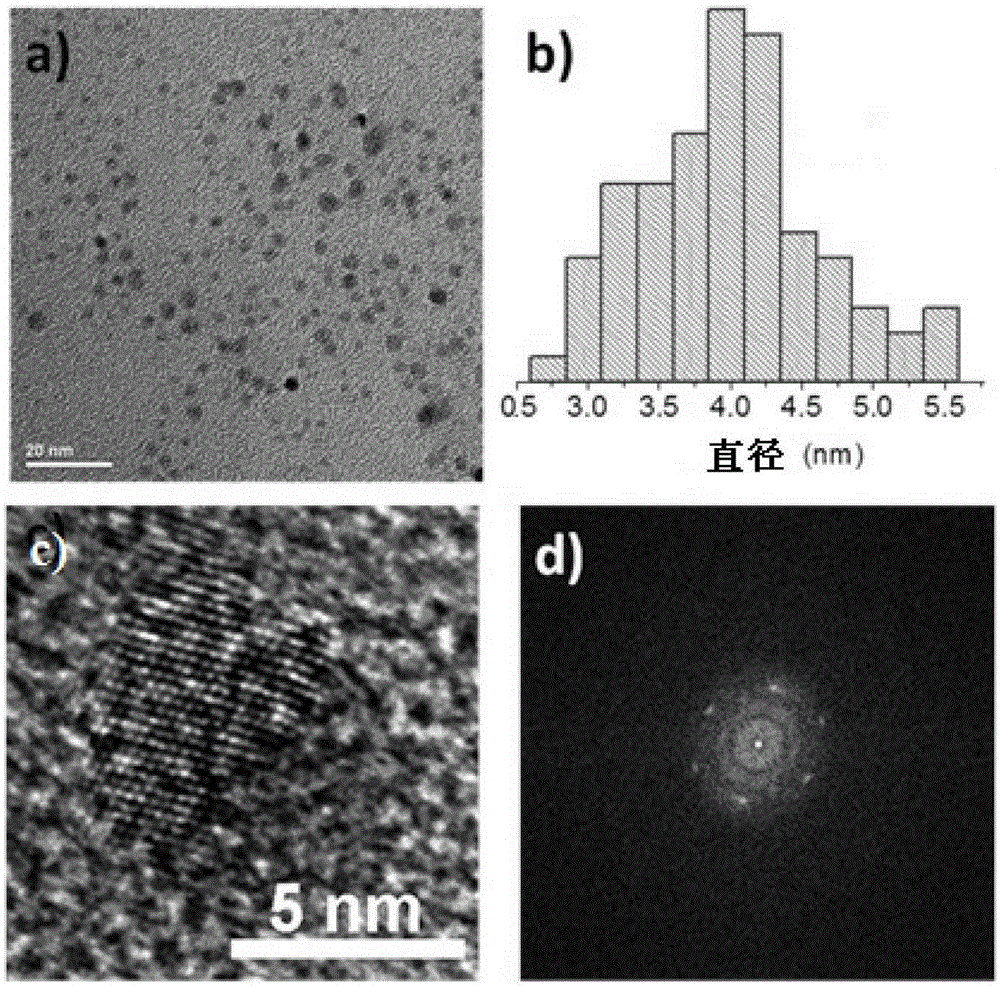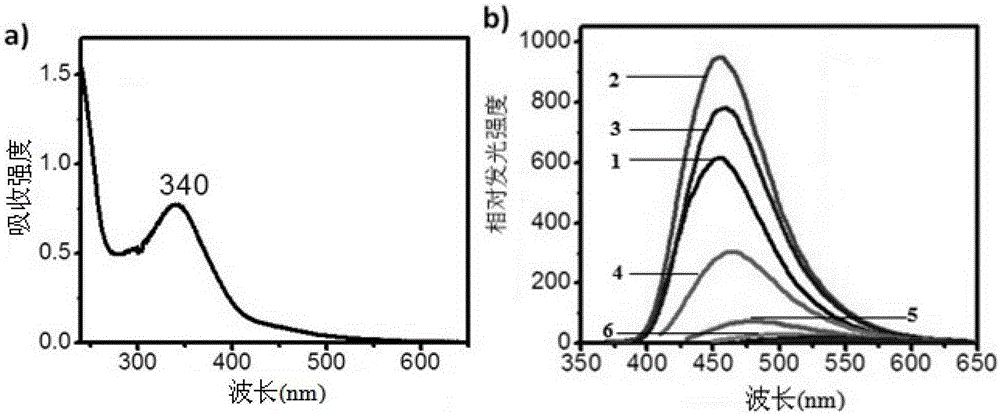High fluorescence quantum efficiency carbon nanodots and preparation method thereof
A carbon nanodot, quantitative ratio technology, applied in nano-carbon, nanotechnology, nano-optics and other directions, can solve the problems of low fluorescence quantum efficiency of carbon nanodots, poor water solubility, complicated operation, etc., to facilitate large-scale production, Widen the scope of application and good biocompatibility
- Summary
- Abstract
- Description
- Claims
- Application Information
AI Technical Summary
Problems solved by technology
Method used
Image
Examples
Embodiment 1
[0040] (1) 2.1g oxalic acid and 2.5g diethylenetriamine are added into a round bottom flask, fully mixed to obtain a mixture;
[0041] (2) The mixture was heated at 170° C. for 16 h to obtain a crude product;
[0042] (3) After cooling the crude product to room temperature naturally, add acetone, precipitate, wash, separate the obtained precipitate through a centrifuge, put the precipitate into a dialysis bag (molecular weight cut-off: 3.0KDa), and dialyze with water for two days , change the water every 6 hours to remove small molecules;
[0043] (4) Freeze-dry the solution in the dialysis bag to obtain a yellow-brown solid, which is carbon nanodots.
[0044] The prepared carbon nano-dots are solid, easy to store, and have very good solubility in water. The aqueous solution of carbon nano-dots is very stable, and no precipitation and aggregation will occur when stored at room temperature for one year.
Embodiment 2
[0046] (1) 1.8g glycine and 7.5g diethylenetriamine are added in a round bottom flask, fully mixed to obtain a mixture;
[0047] (2) The mixture was heated at 175° C. for 10 h to obtain a crude product;
[0048](3) After cooling the crude product to room temperature naturally, add acetone, precipitate, wash, separate the obtained precipitate through a centrifuge, put the precipitate into a dialysis bag (molecular weight cut-off: 3.0KDa), and dialyze with water for two days , change the water every 6 hours to remove small molecules;
[0049] (4) Freeze-dry the solution in the dialysis bag to obtain a yellow-brown solid, which is carbon nanodots.
[0050] The prepared carbon nano-dots are solid, easy to store, and have very good solubility in water. The aqueous solution of carbon nano-dots is very stable, and no precipitation and aggregation will occur when stored at room temperature for one year.
Embodiment 3
[0052] to combine figure 1 Illustrative Example 3
[0053] (1) 2.1g of citric acid and 4.5g of diethylenetriamine are added to a round bottom flask, fully mixed to obtain a mixture;
[0054] (2) The mixture was heated at 165° C. for 6 h to obtain a crude product;
[0055] (3) After cooling the crude product to room temperature naturally, add acetone, precipitate, wash, separate the obtained precipitate through a centrifuge, put the precipitate into a dialysis bag (molecular weight cut-off: 3.0KDa), and dialyze with water for two days , change the water every 6 hours to remove small molecules;
[0056] (4) Freeze-dry the solution in the dialysis bag to obtain a yellow-brown solid, which is carbon nanodots.
[0057] The carbon nano-dots of Example 3 are dissolved in water, and under the irradiation of natural light, they are colorless and transparent. After irradiation with 365nm light, as figure 1 As shown, carbon nanodots are blue in aqueous solution, indicating that carbo...
PUM
| Property | Measurement | Unit |
|---|---|---|
| particle diameter | aaaaa | aaaaa |
Abstract
Description
Claims
Application Information
 Login to View More
Login to View More - R&D
- Intellectual Property
- Life Sciences
- Materials
- Tech Scout
- Unparalleled Data Quality
- Higher Quality Content
- 60% Fewer Hallucinations
Browse by: Latest US Patents, China's latest patents, Technical Efficacy Thesaurus, Application Domain, Technology Topic, Popular Technical Reports.
© 2025 PatSnap. All rights reserved.Legal|Privacy policy|Modern Slavery Act Transparency Statement|Sitemap|About US| Contact US: help@patsnap.com



